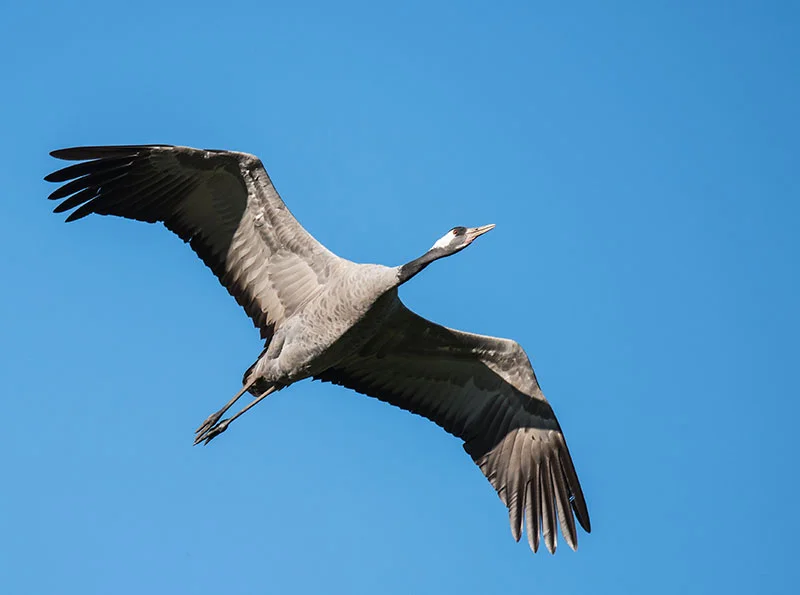
Introduction
Birds are remarkable creatures capable of soaring to incredible heights. From the majestic Rüppell’s vulture to the humble mallard duck, various species have been observed flying at astonishing altitudes. Understanding how high birds can fly is not only fascinating but also crucial for aviation safety and wildlife conservation efforts.
Factors Influencing Bird Flight Altitudes
Several factors contribute to the varying flight heights of different bird species:
- Prey Availability: Birds that feed on the wing, such as swallows, house martins, and swifts, choose elevations where their preferred prey is most abundant.
- Energy Efficiency: Some birds fly at specific heights to minimize energy expenditure. For instance, petrels and albatrosses travel low to make use of wave uplift, while griffon vultures soar high on rising thermals.
- Migratory Strategies: Many small migrants gradually gain altitude during long-haul flights, climbing from 1,000m to 6,000m. This allows them to take advantage of thinner air, which is easier to move through when their cruising speed and power begin to fade.
- Topography: In the mountainous West, birds may climb to higher altitudes to clear mountains, maintaining those altitudes for the entire trip to avoid expending additional energy if another obstacle is encountered.
- Prevailing Wind Patterns: Birds have a remarkable talent for finding altitude layers where they can get a free ride on the wind and avoid layers with opposing winds.
Record-Breaking Bird Flights
Rüppell’s Vulture
The highest flying bird on record is the Rüppell’s vulture. On November 29, 1973, a commercial aircraft struck a bird at 11,300m over West Africa. Feathers lodged in the engine identified it as a Rüppell’s vulture, a critically endangered species that has since been shown to possess a form of hemoglobin in its blood that binds with oxygen exceptionally efficiently.
Bar-headed Goose
Bar-headed geese are known for their impressive high-altitude flights, with direct observations tracking them at 7,290m (23,917 feet) as they migrate over the Himalayas. These birds use a “roller-coaster strategy” during their long migrations, typically ranging in altitude from 4,000m to 5,500m, with occasional excursions to just over 6,000m.
Other High-Flying Birds
Several other bird species have been observed at impressive heights:
- Common cranes have been recorded at 10,000m (33,000 feet) above the Himalayas.
- Whooper swans have been tracked by radar at 8,200m (27,000 feet) over Northern Ireland.
- Alpine choughs have been observed at 8,000m (26,500 feet) on Mount Everest.
- Mallard ducks have been recorded at 6,400m (21,000 feet) over Nevada.
Adaptations for High-Altitude Flight
Birds have several physiological adaptations that allow them to fly at such extreme altitudes:
- Hemoglobin Efficiency: Species like the Rüppell’s vulture possess specialized hemoglobin that binds to oxygen more efficiently, enabling them to extract sufficient oxygen from the thin air at high altitudes.
- Unidirectional Airflow: Birds have a unique respiratory system with unidirectional airflow through their lungs, allowing them to extract more oxygen from the air compared to humans.
- Thermoregulation: High-altitude flights expose birds to extreme cold, but their high metabolic rates and efficient heat production help maintain body temperature.
- Longer Wingspans: Birds that fly at high altitudes tend to have longer wingspans relative to their body size, which helps them maintain lift and stability in the thin air.
Implications for Aviation and Conservation
Aviation Safety
The presence of high-flying birds poses a significant risk to aviation safety. Bird strikes can cause severe damage to aircraft and endanger human lives. Understanding the flight patterns and altitudes of species like the Rüppell’s vulture is crucial for developing effective strategies to mitigate these risks.
Wildlife Conservation
Many high-flying bird species, such as the Rüppell’s vulture and bar-headed goose, face threats from habitat loss, hunting, and climate change. Conserving these species requires a comprehensive understanding of their behavior and ecology, including their remarkable ability to soar to incredible heights.
Conclusion
Birds’ ability to fly at such extreme altitudes is a testament to their evolutionary adaptations and the wonders of the natural world. As we continue to explore and understand these remarkable creatures, we must also work to protect them and their habitats for future generations to marvel at.
FAQ Section
What is the highest recorded flight of a bird?
The highest recorded flight of a bird is 11,300m (37,100 feet), achieved by a Rüppell’s vulture that collided with a commercial aircraft over West Africa in 1973.
How do birds maintain body temperature at high altitudes?
Birds maintain body temperature at high altitudes due to their high metabolic rates and efficient heat production. Their feathers also provide insulation against the extreme cold.
Why do some birds fly at high altitudes during migration?
Some birds fly at high altitudes during migration to take advantage of tailwinds, avoid predators, and conserve energy by flying through thinner air.
Are there any risks associated with high-altitude bird flights?
Yes, high-altitude bird flights pose significant risks to aviation safety. Bird strikes can cause severe damage to aircraft and endanger human lives.
How do birds adapt physiologically to fly at high altitudes?
Birds adapt physiologically to fly at high altitudes through specialized hemoglobin that binds to oxygen more efficiently, unidirectional airflow through their lungs, and longer wingspans relative to their body size.For more information on birds and their flight capabilities, you can visit the Wikipedia page on List of Birds by Flight Heights.


